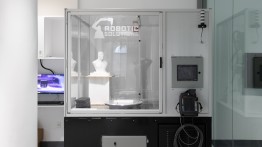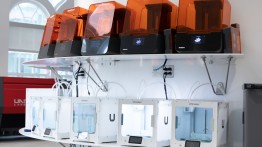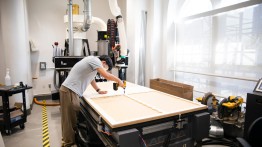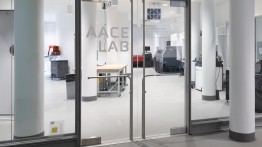IDC Foundation Art, Architecture, Construction, and Engineering Lab
About the AACE Lab
The IDC Foundation Art, Architecture, Construction, and Engineering (AACE) Lab is an advanced fabrication resource offering a wide variety of new digital fabrication tools to all current students at The Cooper Union.
The AACE Lab is open for in-person student use and is a self-service resource, meaning that students operate all equipment themselves. In addition to offering a variety of both standalone and in-class workshops, we also have a robust staff of professional and student technicians who are available to assist with the learning and use of equipment. AACE Lab staff is also available remotely via the AACE Lab Teams Channel.
► For learning resources, including equipment guides & manuals, visit the AACE Lab Wiki
► To start using equipment, create an account on the AACE Lab Queue
Tools & Equipment
The Lab has over 30 pieces of new, digital fabrication equipment including those listed below as well as plenty of periphery and supplementary tools.
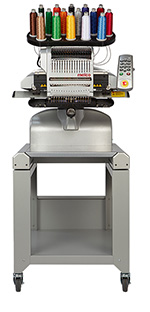
The Formlabs Form 3 is a high-resolution SLA 3D printer. Prints are created by using a UV-laser to precisely cure UV-curable resin layer by layer. Formlabs offers a wide variety of engineering-grade printing materials, from standard white, grey, black, and clear resins, to high performance resins with special properties such as high heat deflection, abrasion resistance, or flexibility. The build area of this machine is: 145 x 145 x 185mm
The Formlabs Wash Station uses an agitated bath of Isopropyl Alcohol to clean off uncured residual resin from 3D prints.
The Formlabs Cure Station is a UV-Curing oven used to post-process certain materials which require or benefit from additional UV Curing.
The Ultimaker S3 is a medium-resolution FDM 3D printer which melts and extrudes plastic filament through a small nozzle to build up prints layer by layer. The S3 is a dual-material printer meaning that it can print with two materials simultaneously, with the secondary material typically either a second color of material or a water-soluble support material. The build area of this machine is: 230 x 190 x 200mm
The Ultimaker S5, a larger version of the S3, is a medium-resolution FDM 3D printer which melts and extrudes plastic filament through a small nozzle to build up prints layer by layer. The S3 is a dual-material printer meaning that it can print with two materials simultaneously, with the secondary material typically either a second color of material or a water-soluble support material. The build area of this machine is: 330 x 240 x 300mm
The 3D Systems Projet 460plus produces full-color 3D prints made of a gypsum plaster substrate material. The prints are medium-resolution and relatively low-strength. The build area of this machine is: 203 x 254 x 203mm
The Omax Protomax is an industrial-grade waterjet cutter in a compact form factor. This machine uses a high pressure jet of water (30,000psi) mixed with aggregate to cut through any material from rubber to glass to titanium, up to 1” thick. The max cutting size of this machine is 12” x 12”
The Formech 686 Vacuum Forming Machine uses built in heaters to soften sheets of plastic and then forms the softened plastic around molds & patterns using vacuum pressure. The maximum material size of this machine is 26” x 27”. It can mold objects up to 8” tall, from sheets of plastic as thick as 10mm.
The Universal Laser Systems ILS 9.150 laser cutter is a 150 watt C02 laser cutter with a 24” x 36” cutting area. It can cut and etch a wide variety of materials up to ½” thickness including but not limited to: paper, solid wood, plywood, acrylic, fabric. While this machine cannot cut through glass or stone, it can etch the surfaces of both.
The Universal Laser Systems VLS 6.60 laser cutter is a 60 watt C02 laser cutter with a 18” x 32” cutting area. It can cut and etch a wide variety of materials up to 1/4” thickness including but not limited to: paper, solid wood, plywood, acrylic, fabric. While this machine cannot cut through glass or stone, it can etch the surfaces of both.
The BOFA Laser Filtration System filters harmful laser cutting fumes into breathable air via HEPA particulate filters and activated carbon filter media. Each laser cutter is equipped with a BOFA filter which purifies exhaust fumes before venting them outside.
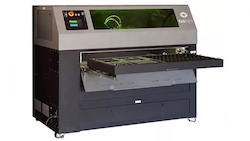
The 3D Fablight 4500 is a metal-cutting laser cutter for cutting metal sheets or tube. The 4500w pulsed-beam fiber-laser is capable of cutting metal over ⅛” thickness. The cutting area is 25” x 50” for sheets and 2”ODx50”L for tubes.
The Roland GS-24 vinyl cutter accepts rolls of adhesive vinyl up to 24” wide. It uses a blade to precisely cut adhesive vinyl sheets without cutting through the backing material.
The DiWire Pro CNC Wire Bending machine uses motors to precisely bend a variety of wire thickness from 1.5mm to 5mm.
The Melco CNC Embroidery machine digitally embroiders imagery from a color vector file on textiles with up to 16 different needles. It is an industrial-grade machine with speeds up to 1500 stitches per minute.
The Laguna Smart Shop II SUV is an industrial grade CNC router capable of cutting a wide variety of materials including woods, aluminum, plastics, and more up to 4’ x 8’. It has a 12hp spindle motor enabling cut speeds of over 1000 inches per minute. The machine has an 8-station automatic tool changer and is outfitted with a vacuum hold-down table to hold sheets of material without the use of screws or clamps.
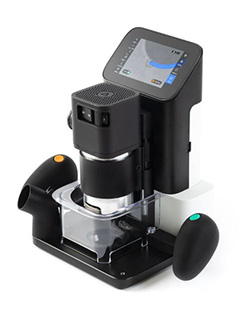
The high-powered Oneida Dust Collector collects dust and chips from the Laguna CNC machine. As a dedicated dust collector, it allows the CNC machine to function with much less dust and preserves a clean and safe working environment.
The Mark II Structure Scanner is a medium-resolution 3D scanner that is extremely portable and easy to use. It produces 3D scans which can be used for 3D printing, CNC milling, and many other applications.
The Creaform Academia 50 3D Scanner is a high-resolution 3D scanner with a resolution and measurement accuracy of up to 0.250mm. This scanner can scan objects of any material, color, and texture. The 3D scans captured by this scanner can be used 3D printing, CNC milling, and other applications.
The Kuka Robotic Machining Cell features a 6-axis Kuka robotic arm outfitted with a 3hp 24k rpm spindle and a 7th axis rotary table. It is capable of cutting stock material such as foam, plastics, wood, and more, as large as 48” Diameter x 48” tall.
The Shaper Origin is a CNC-assisted handheld router. Using a combination of computer vision, motors, and a 2D CAD file to guide your movements and correct your mistakes. It can be used on any sized surface.
The Microsoft Hololens is a mixed-reality or Augmented-reality headset. With embedded computer vision, it can overlay computer generated graphics onto the users field of vision.
The HTC Vive Pro is a professional grade VR headset with high resolution screens, built in directional audio, and has a range of up to 5m x 5m with the included base-station.
Images are courtesy of respective manufacturers except where noted.
Hours & Location:
Located in the Foundation Building 4th floor lobby (room 403), the AACE Lab is open:
|
Monday: |
10AM – 8PM |
News & Current Opportunities:
AACE Lab Grant Program:
With Generous Support from the IDC Foundation, we are pleased to announce the AACE Lab Grant Program, a sub-grant of the Cooper Union Grant Program. The AACE Lab Grant Program provides opportunities for Faculty, students, and staff to apply for funding to leverage the AACE Lab resources to explore, develop and implement projects, and activities that will further exploration of digital fabrication, increase engagement with the AACE Lab, inspire and facilitate imaginative new ways of thinking, and/or advance diversity and inclusion efforts in the curriculum. Application information coming soon...
Get Free Materials! APPLY HERE
Do you want to experiment with new materials or use the AACE Lab more? Apply for an AACE Lab material grant to request materials that you want to use in the AACE Lab. If your request is approved, we will purchase material for you.
Now Hiring:
The AACE Lab is currently hiring student technicians*. While there are opportunities for entry-level, learning roles, we are also seeking students experienced with digital fabrication tools and CAD. There are currently position openings for Federal-work-study study eligible students. Apply here via CampusJobsConnect

The AACE Lab has been brought to you with major
support from the IDC Foundation.

